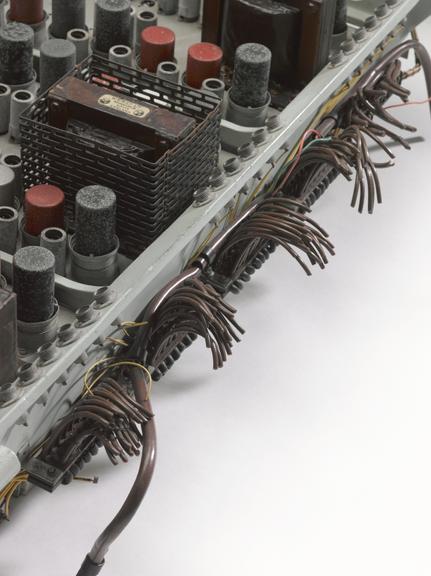







Logic door from a Ferranti Mark I computer with 3 transformers and 42 valves in place, manufactured by Ferranti Limited, Moston, Manchester, England, 1951.
Logic door from a Ferranti Mark I computer with 3 transformers and 42 valves in place, manufactured by Ferranti Limited., Moston, Manchester, England, 1951.
The Ferranti Mark I was the world's first commercially available computer. The first Mark I was delivered to the University of Manchester in February 1951, and for this reason is sometimes known as the Manchester Ferranti. It was also based on two earlier computers, the Manchester Mark I and the SSEM (or 'Baby') that had been developed at the University of Manchester. It was used to run the world's first computer chess game. Ferranti continued to develop their computers, and by 1959, had sold 69 of their various computer models.
Details
- Category:
- Computing & Data Processing
- Object Number:
- 1984-535
- Materials:
- metal (unknown), copper (alloy), iron, paint and plastic (unidentified)
- Measurements:
-
overall: 913 mm x 640 mm x 200 mm, 38kg
- type:
- computer component
- credit:
- Donated by Ferranti Limited




